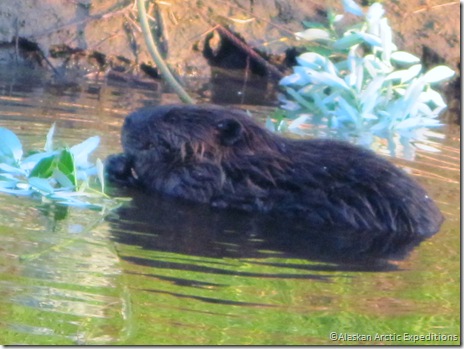July 1, 2012
Pulling Over Sand
It was -65°F, the snow was dry as sand and the dogs were pulling with all their heart, but for the life of me I couldn’t figure out who was making that weird noise. It was the strangest sound I’ve ever heard from a dog. It’s common for malamutes to growl when they go into a hard pull, but these growls were almost similar to a human voice, like someone grumbling “Get! Get! Get!” It reminded me of my old high school football coach yelling, “Get going, you slackers! Now, get! Get!”

Peering through the fog rising from the dogs’ breaths I noticed Mitch was low to the ground, burying the harness deep in his thick fur and pulling for all he was worth. His head jerked upward every time the bizarre growl sounded. I figured he was the culprit. At the time, Mitch was a strapping 2 year old boy and probably going through that raging hormone stage males go through at around that age. I’m sure he wanted everyone to know that he was tougher than hell, tougher than his mates, and tough enough to take on the world and he had the brute strength and muscles to prove it.
Traveling in –65F temperature the dogs create a cloud with their breaths.

What amazes me about Alaskan malamutes is that they love a solid, muscle-bulging, gut-wrenching pull. They just love it. They’re one of the only animals I can think of on earth that can work at such high intensity for so long. To protect themselves from succumbing to exhaustion and crashing, malamutes have developed a strategy that sets them apart from other breeds, a strategy that has evolved over centuries of hard work. It’s a calculated and ingenious energy conserving tactic.

The best way to exemplify this tactic of how is to visualize it as if you are standing on the runners with me. Directing your eyes up the gangline, you will notice that some tug lines are slack and the dogs are pulling sporadically. Actually, these dogs are testing the load. Like a computer gathering data, those ancient canine creatures are testing the weight in the sleds and friction of the snow.
Depending on these conditions, the dogs will set a comfortable pace for themselves that enables them to conserve energy like a marathon runner. Even after the freight team finds a good pace, they stretch the energy saving tactic further and each dog hits their harness for a few minutes then relaxes and hits their harness again. This strategy lets them recover their energy, regain their strength, and then jump back in the game. Often on sea ice the pace will surge every few minutes when the team employs this method in sync.

However, when temperatures plummet to around -40°F or colder for an extended time, the snow becomes dry and abrasive as sand. This phenomenon is very common in the Arctic and eventually the snow loses a lot of its moisture content and morphs into the consistency of sand. Mushing in these frigid and dry conditions is the trickiest dog mushing there is. You can burn out a team before you know it. When the snow is dry there isn’t any glide whatsoever, not even going downhill, which means the dogs do not ever get a break.

To give you an idea of the amount of effort that it takes for freight dogs to pull on dry snow, let’s say your dog is pulling with every muscle he’s got in a weight pull competition and has succeeded crossing the finish line with his legs shaking and adrenalin running on high. Now just have him continue for 10-20 miles. That’s what it’s like for freight dogs. That’s why I prefer to travel 8 hours a day on good snow, but when the snow is dry I limit our travel to 3 to 5 hours so the dogs don’t get overworked and ruin their enthusiasm for the pull. You might think that’s a short day of traveling but half the secret in conducting multi-month expeditions is maintaining a happy, healthy, and fresh team. A soured team will still work and pull, but they aren’t happy. There’s not a lot of enthusiasm or excitement and they pull just hard enough to keep the lines tight and sled moving. And in the long run, dogs who are soured consecutively every year have very short careers. If proper care is taken to where they never get soured, a dog should be in their prime at 7 or 8 years old, and nowhere near retirement.

How do you know when the snow is so dry that you can travel only for 3 to 5 hours? Well, the answer is in the sound of the sled runners. If you’re hauling heavy freight the runners squeak, groan, and moan on dry snow. The louder the runners squawk and rebel, the dryer the snow is. Sometimes the noise is deafening.
Now Mitch is7 years old. His voice has deepened and it’s hard to tell his “talk” from the others in the team. But once in awhile I can detect his signature growl which reminds me that my buddy is still happy and tough as hell.
Mitch

- Barbara
I love your posts… It’s like I’m there, except I’m not freezing my hind end off!
- Mike
It’s amazing how these dogs know how to keep a steady pace during a long time. These dogs aren’t build for speed. Mother nature made them for endurance and that with those temperatures! Now that’s amazing.

